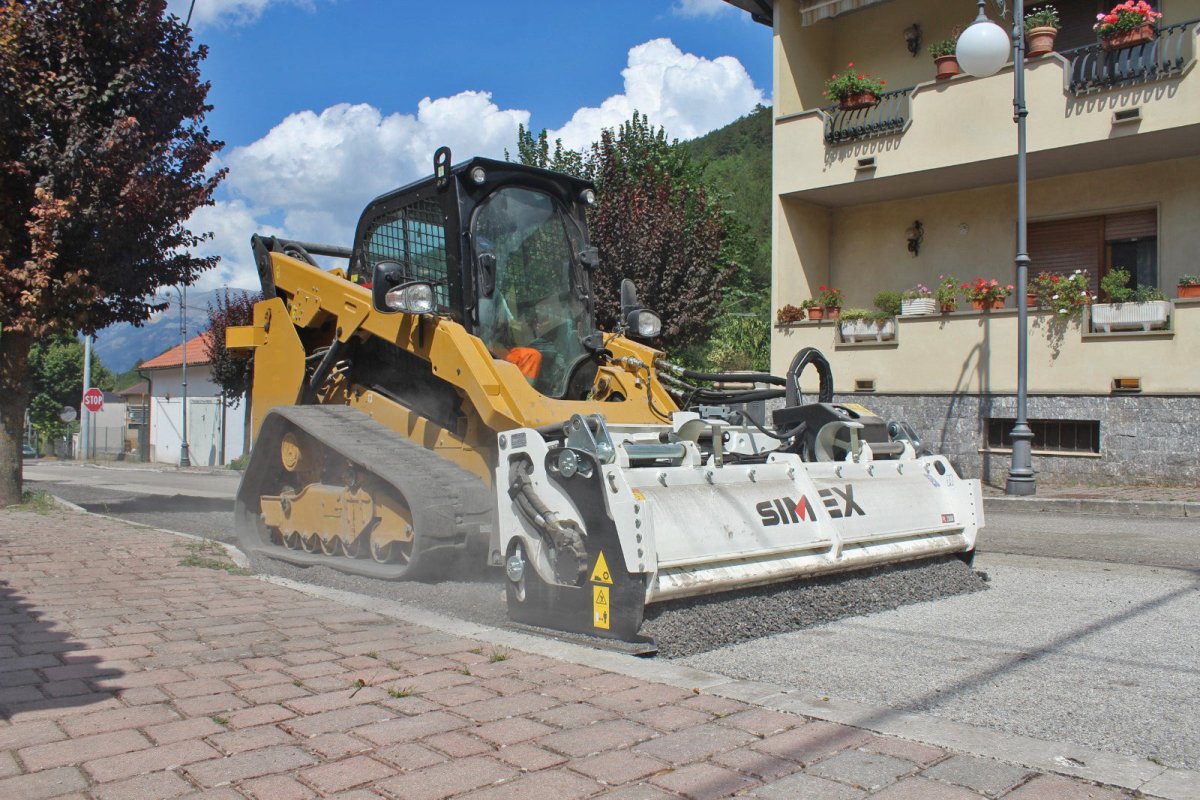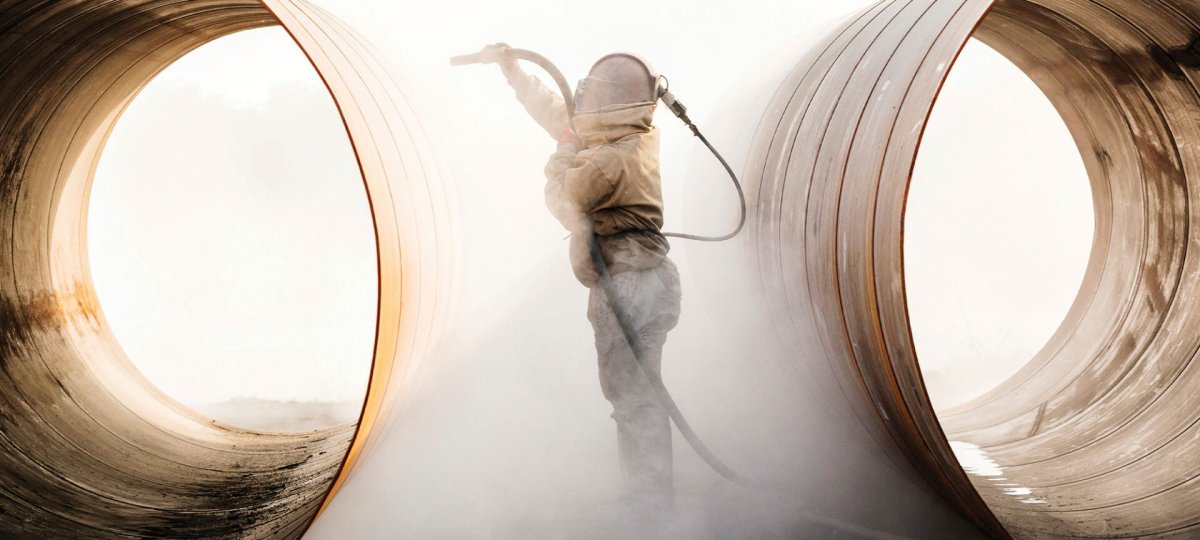Efficient Road Maintenance With Simex

Simex at Bauma Munich from 24 to 30 October, Hall C5, Booth 325. Bauma Munich – the most anticipated trade fair event in terms of strategic importance, turnout, new product launches and media impact for the earthmoving sector – has always been an opportunity for Simex to show to its partners and users its technical quality.
The ability to innovate and do research, combining the new models in the range with new technological concepts, it’s the Simex way to outline the paths to be followed in the future. Simex PL 2000 The widest asphalt cold planer attachment on the market In the world of road maintenance Simex has always stood out for the wide range of its products: the famous PL self-leveling asphalt cold planers, in the version for skid steer loaders and PLB for excavator. After the recent introduction on the market of the PL 1500, presented in 2020 at the last edition of Conexpo in Las Vegas, Simex has gone further, creating a model that allows to perform 2 milling meters in a single pass: PL 2000 can be considered the big sister among the asphalt planers of the 1000-1200-1500 series, specially designed for scarifying the road surface. Simex has implemented its offer of attachments dedicated to the road surface restoration, where it is necessary to intervene in a qualitative manner while guaranteeing speed of execution and a reduction in construction times, to the benefit of operators and traffic. This led to the creation of a model equipped with a 200 cm wide milling drum, the largest currently available on the market of cold planers for compact loaders. The construction quality of the milling drum is also ensured by Simex production process, which has an internal robotic welding department with double-arm stations in order to carry out a resistant tooth holder with the utmost precision, to the benefit of longevity and performance. SimexPL2000-24.jpg The PL 2000 is designed to be coupled to the latest generation SSL - characterized by high hydraulic power - and benefits from all the Simex features that make the difference on site. As the on-site operators pointed out, the self-leveling system – a Simex patent that guarantees a constant working depth in any condition – was the trump card on a highly irregular surface characterized by cracking and potholes. In addition, the water spraying system, with a tank integrated into the side shift (Simex patent), has allowed the correct dust abatement during the milling phase, avoiding mounting a special system on the prime mover roof. Finally, the Perfomer device, mounted in an ergonomic position, easy to view from the operator cabin, optimizes the attachment performance according to the forward speed of the operating machine. Made with different colors and a graphic scale, it is a Simex patent that allows the device to self-calibrate exactly to the maximum pressure of the prime mover on which the equipment is installed. The PL 2000 lands on the market unseating the PL 1500 from the supremacy of the largest road cold planer for compact loaders, boasting a milling width of 200 cm. A corporate record that confirms Simex as a reference point as well as an innovative and reliable technological partner of choice for thousands of earthmoving industry professionals worldwide. Simex ART The technology for the recovery of distressed road pavements, that reuses 100% of the existing material, will be unveiled in its final version at Bauma Munich. Simex-ART-3.jpg In recent years, the company has continued to innovate, setting itself a very ambitious goal: offer a cutting-edge technology for the recovery of distressed road pavements. This challenge has found its practical concretization: ART, anagram of Asphalt Repair Technology. The technology for asphalt regeneration. Simex developed a technology that can be used for the restoration of road surfaces, to a depth varying between 30 and 10 mm. A cutting-edge technology that does not require milled material to be removed or virgin HMA (Hot Mix Asphalt) to be added, but that uses only existing material available on site. A technology that does not disrupt traffic flow and that ensures immediate road drivability after its restoration. It also ensures it will last for a reasonable amount of time, to allow local authorities to plan road maintenance, with significant benefits in terms of road user safety. During the milling stage, Simex uses an environmentally friendly chemical admixture for the cold regeneration of the mix produced. By drawing on the tried and tested self-levelling milling technique of PL cold planers, the new equipment consists of two drums, the first for milling and mixing, the second for crushing and disgregation. It also features an integrated 85 l tank containing the rejuvenator, with electric pump and nebulizers, and a detection wheel that ensures the correct dosage of additive, proportional to the speed of the carrier and the set working depth. The rehabilitation work consists of three steps: MILLING AND REGENERATION MIXING COMPACTION* * ART takes care of the first two steps, while the third is determined by the compaction tool supplied to the operator, vibrating plate or compactor roller. The operator, after assessing the extent of the problem, sets the working depth of the equipment and proceeds with the first pass, in which both drums are activated. The first, responsible for the primary milling, pushes the material towards the second chamber, the rear one, containing the crusher drum. During the passage, the nebulization device sprays the milled material with the rejuvenator in the proportion determined by the detection wheel, based on the depth set and the advancement speed. The crushing drum, which rotates at a higher speed, reduces the milled product to 0-15 mm, while a grid controls the output size distribution. A second pass, activating only the first drum, the front milling one, may be necessary to obtain the correct mixing of the regenerated material. The process ends with the compaction by roller or vibrating plate. In the experimentation phase, Simex was supported by DICAM (Department of Civil, Chemical, Environmental and Materials Engineering of the University of Bologna) and the precious collaboration with Iterchimica and its high-tech and green additive Iterlene. In a more advanced phase, ART has been tested by some companies of the road sector, using other rejuvenators of their own, with satisfactory results. Simex ART carries on several innovations. Among all the system that controls and regulates the nebulization and mixing of the regenerating additive, coordinated by the detection wheel, which together with the hydraulic depth adjustment, allows an easy and controlled dosage of the admixture, depending on the extent of distress and characteristics of the asphalt. The presence of the double drum allows the use of a single equipment for all processing stages. The grain size obtained is also important to ensure the right amount of fine particles within the regenerated product. The grid, positioned in the rear part of the second chamber, determines the size of the output material. Therefore, Simex ART has a triple goal: To repair road surface distress quickly and effectively, without disrupting traffic flow and, especially, without repeatedly having to carry out emergency maintenance. To reduce the costs of purchasing and handling new mixes by using only HMA (Hot Mix Asphalt) available on site. Environmental sustainability: 100% of the materials present on site are recovered and regenerated, while construction site traffic is minimized as there is no need to supply new materials and the removal of discarded ones. Simex ART opens up interesting scenario within circular economy and environmental sustainability and can represent an opportunity for effective, long-lasting and lower-cost management of pavement distress. The advantages are therefore multifold. Logistical and operational advantages. Restoration of road surface distress, quickly and with long-lasting results, which allows for adequate road maintenance planning, at sustainable costs. A dynamic and smaller construction site: no large machines are required, which significantly reduces traffic disruption. A reduced number of workers and a single vehicle containing the necessary equipment. Cost savings: zero costs for the supply and transport of new mixes and virgin aggregates. Environmental advantages. No impact: pre-existing materials are reused, recycling and rehabilitating worn HMA (Hot Mix Asphalt). Technically, this operation can also be repeated in subsequent maintenance operations. Use of eco-friendly materials. No handling or management of special materials or waste Article released on World Highways, October 1, 2022.



